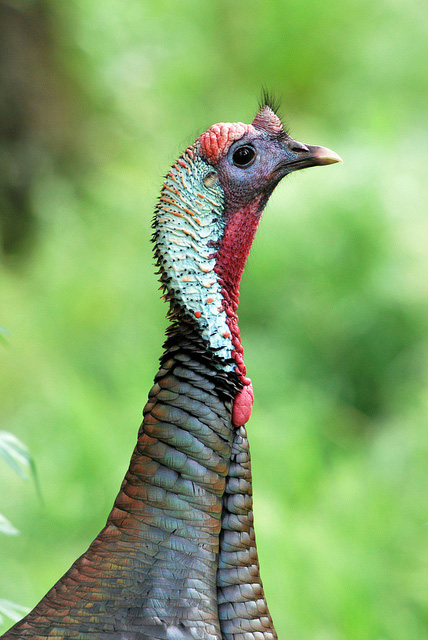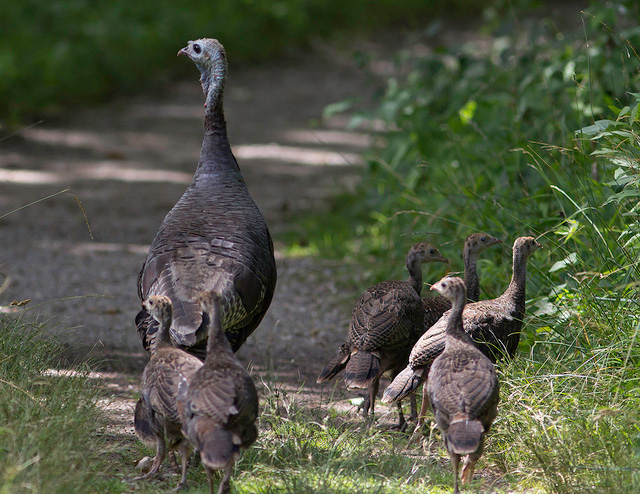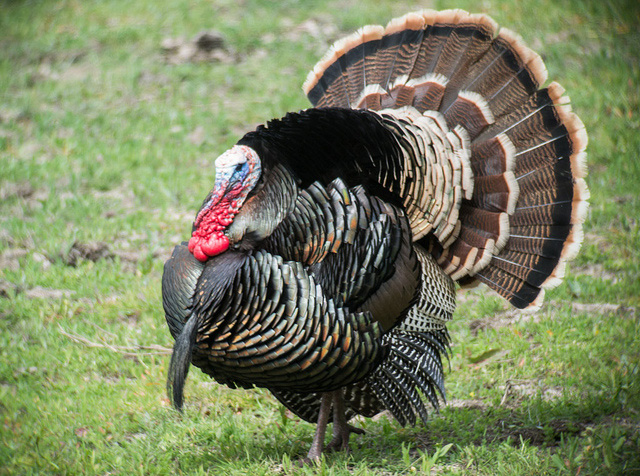Wild turkey (Meleagris gallopavo); photo by C.V. Vick on Flickr (noncommercial use permitted with attribution / no derivative works).
Wild Turkey
South Carolina designated the wild turkey as official state wild game bird in 1976. A true native American, the eastern wild turkey (Meleagris gallopavo silvestris) is the largest and most widely distributed of the six recognized subspecies of wild turkey in North America. The male can grow up to four feet tall and weigh well over 20 pounds. Hens may be almost as tall but usually weigh no more than 12-14 pounds. The wild turkey is also an official state symbol of Massachusetts, Alabama, and Oklahoma.
Native Americans enjoyed an abundance of turkeys for thousands of years before settlers arrived in the New World, although Indians generally avoided eating turkey (regarding it as "starvation food" - believing that turkey was fit to hunt only by children, women, and Europeans). The Indians valued turkeys more for their feathers and as spiritual symbols.
By the early 1900's wild turkeys had all but disappeared (a result of commercial harvesting and habitat destruction). Fortunately, conservation and wildlife organizations intervened, and the wild turkey made a dramatic recovery - today 6.4 million wild turkeys roam the lower 49 states.
Turkeys are unique, resiliant, and prolific. The male turkey (tom) strives to mate with many females. Toms begin their breeding displays in early spring - strutting proudly for the hens with fanned tail and fluffed feathers. The Toms' head turns a bright red during this mating display.
Toms have nothing to do with the poults (baby turkeys), leaving all nesting and rearing chores to the female. A turkey hen lays 9-12 eggs in a shallow nest where she incubates her clutch for about 28 days. She then leads her newly hatched brood to forage for insects, berries and seeds.



